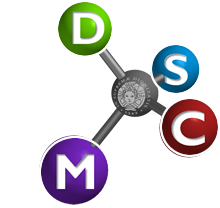
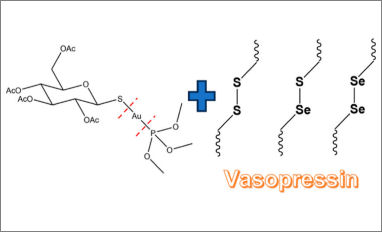 Congratulations to our PhD student Ester Giorgi for the recent scientific publication entitled “Mechanistic Evaluations of the Effects of Auranofin Triethylphosphine Replacement with a Trimethylphosphite Moiety” in Inorganic Chemistry. A panel of four gold(I) complexes has been recently synthesized and characterized, taking inspiration from the well-known clinical compound auranofin. The aim of this study was to gain a deeper understanding of the strength and stability of the P–Au bond by conducting an extensive investigation on relevant biological models.
Congratulations to our PhD student Ester Giorgi for the recent scientific publication entitled “Mechanistic Evaluations of the Effects of Auranofin Triethylphosphine Replacement with a Trimethylphosphite Moiety” in Inorganic Chemistry. A panel of four gold(I) complexes has been recently synthesized and characterized, taking inspiration from the well-known clinical compound auranofin. The aim of this study was to gain a deeper understanding of the strength and stability of the P–Au bond by conducting an extensive investigation on relevant biological models.
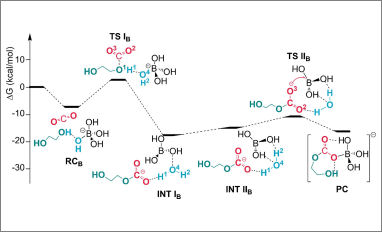 Congratulations to our PhD student Elisa Rossi for the recent publication "Theoretical insights into the reversible CO2 absorption by ethylene glycol/KOH/boric acid low temperature transition mixture". In this work Density Functional Theory calculations were performed to study the speciation of components in the mixture and the absorption/desorption mechanisms, providing reasonable hypotheses explaining the experimentally demonstrated reversible CO2 capture.
Congratulations to our PhD student Elisa Rossi for the recent publication "Theoretical insights into the reversible CO2 absorption by ethylene glycol/KOH/boric acid low temperature transition mixture". In this work Density Functional Theory calculations were performed to study the speciation of components in the mixture and the absorption/desorption mechanisms, providing reasonable hypotheses explaining the experimentally demonstrated reversible CO2 capture.
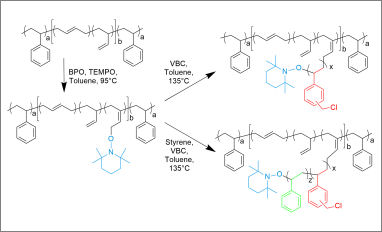 Congratulations to our PhD student Andrea Roggi for his publication entitled "SBS-based AEM for water electrolysis via NMP" in Polymers. Nitroxide Mediated Polymerization (NMP) was employed for the synthesis of VBC/Sty-graft copolymers starting from a commercial thermoplastic elastomer, namely the Styrene-Butadiene-Styrene (SBS) tri-block copolymer. The synthesized copolymers were used for the preparation of Anion Exchange Membranes (AEMs) for water electrolysis after the conversion of the grafted moieties into ionic sites with Trimethylamine (TMA).
Congratulations to our PhD student Andrea Roggi for his publication entitled "SBS-based AEM for water electrolysis via NMP" in Polymers. Nitroxide Mediated Polymerization (NMP) was employed for the synthesis of VBC/Sty-graft copolymers starting from a commercial thermoplastic elastomer, namely the Styrene-Butadiene-Styrene (SBS) tri-block copolymer. The synthesized copolymers were used for the preparation of Anion Exchange Membranes (AEMs) for water electrolysis after the conversion of the grafted moieties into ionic sites with Trimethylamine (TMA).
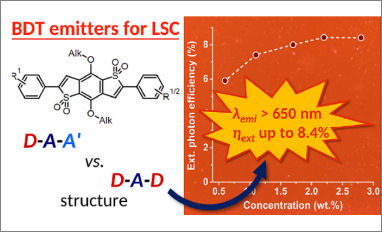 Congratulations to our Ph.D. students Cosimo Micheletti and Alberto Picchi for their scientific publication entitled “Orange/Red Benzo[1,2‑b:4,5‑b′]dithiophene 1,1,5,5-Tetraoxide-Based Emitters for Luminescent Solar Concentrators: Effect of Structures on Fluorescence Properties and Device Performances” in the ACS Applied Energy Materials journal. A series of organic fluorescent emitters bearing an electron-withdrawing benzo[1,2-b:4,5-b′]dithiophene 1,1,5,5-tetraoxide unit as their central core were designed, synthetized, and characterized.
Congratulations to our Ph.D. students Cosimo Micheletti and Alberto Picchi for their scientific publication entitled “Orange/Red Benzo[1,2‑b:4,5‑b′]dithiophene 1,1,5,5-Tetraoxide-Based Emitters for Luminescent Solar Concentrators: Effect of Structures on Fluorescence Properties and Device Performances” in the ACS Applied Energy Materials journal. A series of organic fluorescent emitters bearing an electron-withdrawing benzo[1,2-b:4,5-b′]dithiophene 1,1,5,5-tetraoxide unit as their central core were designed, synthetized, and characterized.



